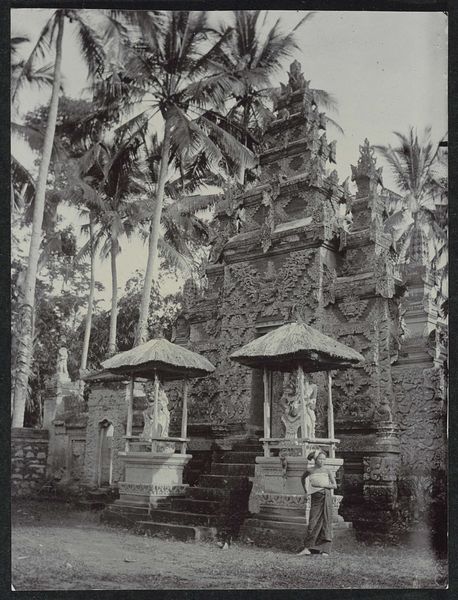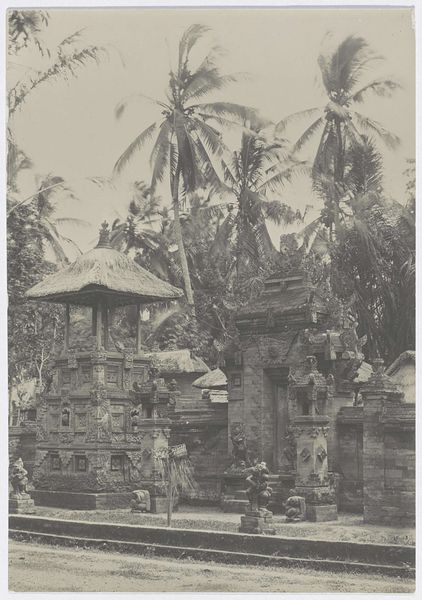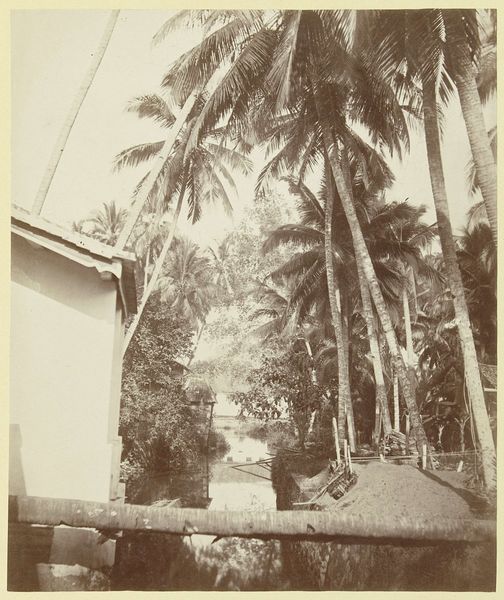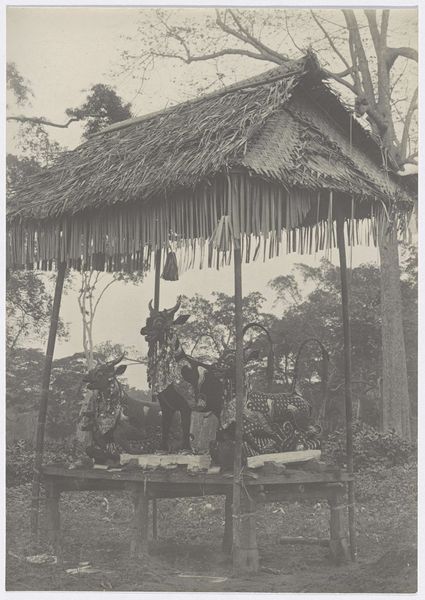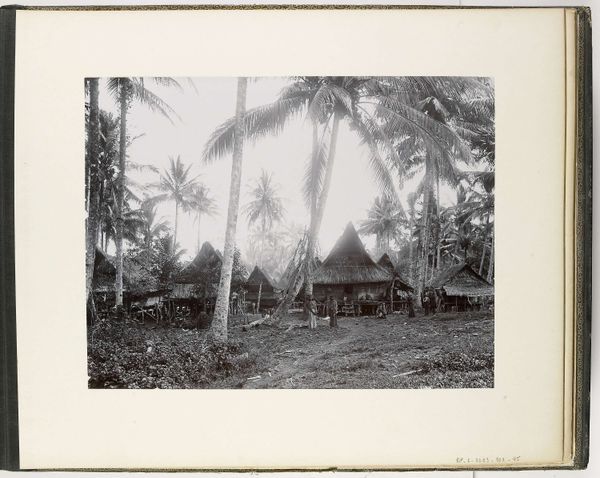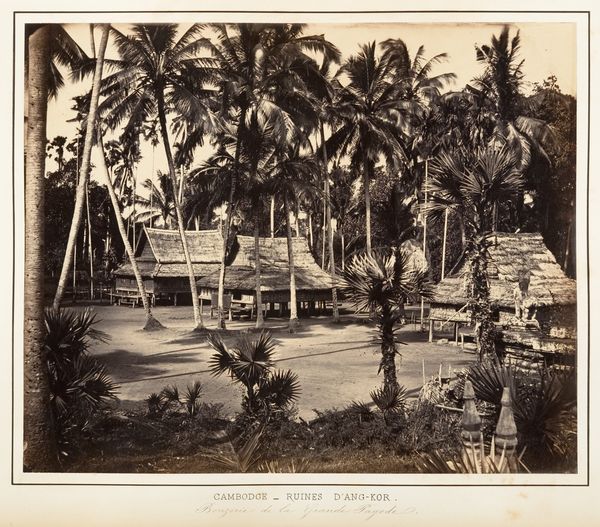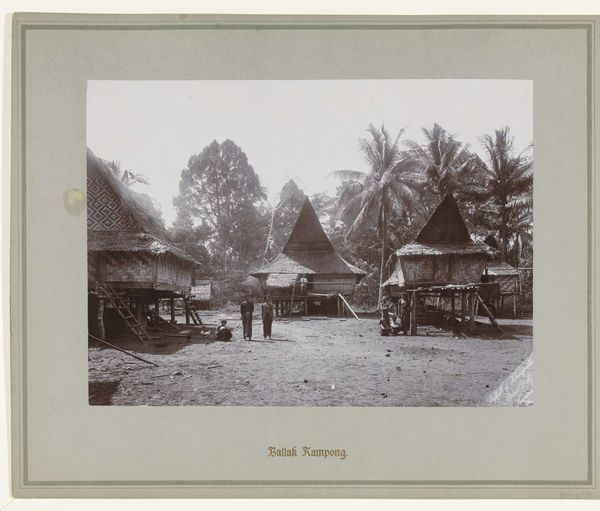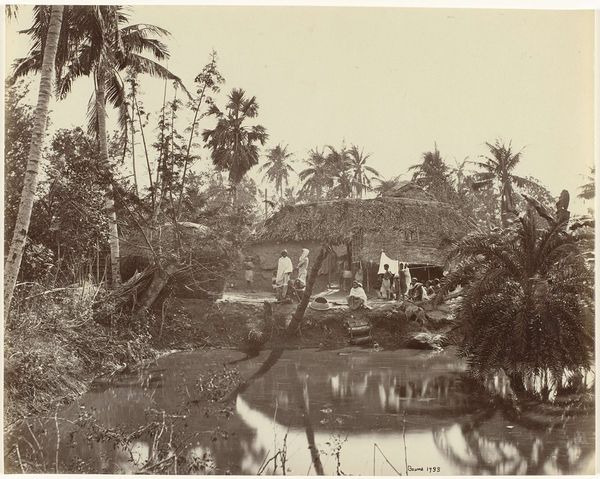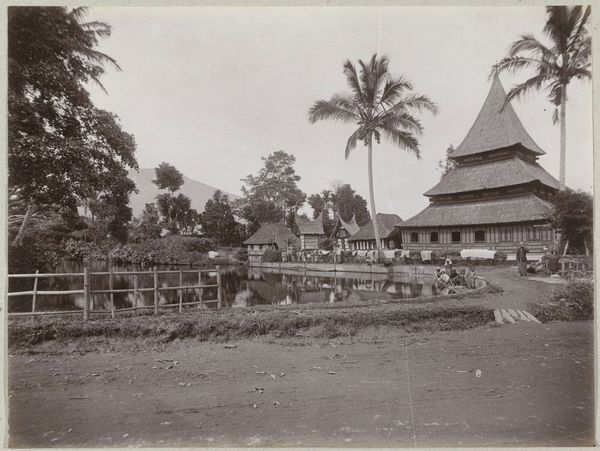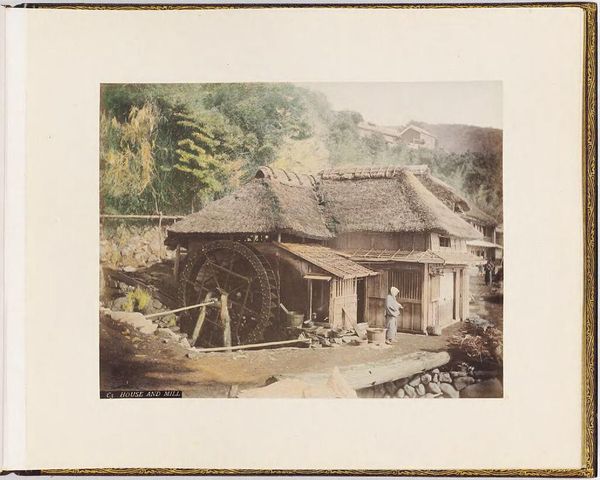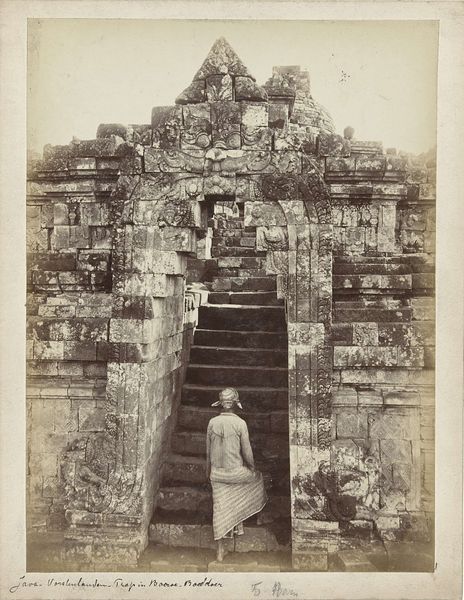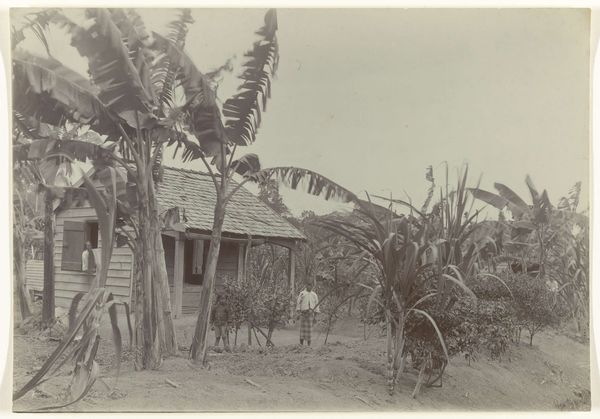
albumen-print, photography, albumen-print
#
albumen-print
#
landscape
#
photography
#
orientalism
#
albumen-print
Dimensions: height 227 mm, width 168 mm
Copyright: Rijks Museum: Open Domain
Editor: So this photograph, “Offerplaats op Bali, voormalig Nederlands-Indië” or “Sacrificial Site in Bali, former Dutch Indies,” likely taken between 1890 and 1910 by Onnes Kurkdjian using the albumen print process…it's a captivating glimpse into another world. What strikes me is how this image might be viewed, back then and now, by viewers completely removed from its original cultural context. What's your interpretation of it? Curator: Well, you've touched on a critical point – context. These ethnographic photographs, like many taken during the colonial era, walk a tightrope between documentation and exploitation. While seemingly capturing authentic cultural practices, they were often produced and consumed within unequal power dynamics. How might the photographer's presence, as a member of the colonial power structure, influence the scene itself, or how it was framed and presented? Editor: I hadn’t thought about the potential impact of the photographer's gaze so directly. So, are you suggesting the photograph, rather than simply depicting reality, becomes a curated narrative, influenced by colonial objectives? Curator: Precisely. The selection of what to include, what to omit, the angle, the lighting… these all contribute to a specific reading. Think about the term "Orientalism." This image, though seemingly objective, participates in that discourse. What expectations about "the Orient" did the intended European audience already possess? How did the image reinforce, or perhaps challenge, those expectations? Consider how it was exhibited. Was it in a scientific display, a world fair, or an art gallery? The context of display profoundly shapes its meaning. Editor: So it becomes more than just a picture of a Balinese offering place. It’s about the relationship between the colonizer and the colonized, and how that relationship was visualized and disseminated. I never looked at these photographs the same way. Curator: Exactly! Understanding that historical context is key to unraveling the layers of meaning embedded within the image and appreciate the power dynamics that were involved in creating and receiving these types of works. It also enables a much richer understanding of the subject portrayed.
Comments
No comments
Be the first to comment and join the conversation on the ultimate creative platform.
